
Discovering the Myths and Facts Surrounding Dyslexia
😕
Dyslexia is a learning disorder that affects an individual’s ability to read and comprehend written language. Unfortunately, there are many myths and misconceptions surrounding this condition, which can lead to misunderstandings and stigma. In this article, we will explore some of the common myths and facts about dyslexia, aiming to shed light on this often misunderstood learning disorder.
One common myth about dyslexia is that it affects intelligence. This couldn’t be further from the truth. Dyslexia has absolutely no correlation with a person’s intelligence or cognitive abilities. In fact, many individuals with dyslexia possess exceptional intelligence in areas such as problem-solving and creative thinking. It’s important to understand that dyslexia is simply a different way of processing information, particularly when it comes to reading and writing.
Another myth surrounding dyslexia is that it can be outgrown or cured with time. While it is true that with specialized interventions and support, individuals with dyslexia can develop effective coping strategies and improve their reading skills, it is not something that can be completely cured or «grown out of». Dyslexia is a lifelong condition, and individuals with dyslexia may always require certain accommodations and support to succeed academically and in other areas of life.
Contrary to another common belief, dyslexia is not caused by laziness or a lack of effort. It is a neurobiological condition that affects the way the brain processes language. People with dyslexia experience specific difficulties in decoding and recognizing words, which can make reading and writing a challenging task. It’s important to remember that dyslexia is not a reflection of a person’s character or work ethic, but rather a legitimate learning difference that requires understanding and support.
In conclusion, it is crucial to dispel the myths and misconceptions surrounding dyslexia. Understanding that dyslexia has no connection to intelligence, cannot be outgrown, and is not a result of laziness is essential in promoting a more inclusive and supportive environment for individuals with dyslexia. By raising awareness about the realities of dyslexia, we can help create a world where those with dyslexia are empowered to reach their full potential and thrive.
The Impact of Early Intervention on Dyslexia
💡📚
En el mundo actual, muchos niños y adultos luchan con la dislexia, un trastorno de aprendizaje que afecta la capacidad de leer, escribir y deletrear. Sin embargo, con la intervención temprana adecuada, es posible minimizar los efectos negativos de la dislexia en el desarrollo académico y emocional de los individuos.
La intervención temprana es clave para ayudar a los niños con dislexia a sobrellevar los desafíos que enfrentan en el aula. Los estudios han demostrado consistentemente que cuando se ofrecen intervenciones especializadas en una etapa temprana, los niños con dislexia mejoran su capacidad de leer y escribir. Esto también tiene un impacto significativo en su autoestima y motivación para aprender.
Una de las formas más efectivas de intervención temprana para la dislexia es a través de estrategias de enseñanza multisensoriales. Estas estrategias involucran a varios sentidos como la vista, el oído y el tacto para ayudar a los niños a comprender y recordar los conceptos clave de la lectura y la escritura.
En muchos casos, los niños con dislexia pueden beneficiarse de programas de intervención individualizados que se adapten a sus necesidades específicas. Estos programas pueden incluir actividades lúdicas, ejercicios fonéticos y prácticas de lectura diarias. Es importante destacar que la consistencia y el apoyo continuo son fundamentales para el éxito de la intervención temprana en la dislexia.
Los efectos positivos de la intervención temprana en la dislexia no solo se limitan al rendimiento académico. También se ha observado que los niños que reciben intervención temprana tienen una mayor confianza en sí mismos y una mayor motivación para superar los obstáculos de la dislexia. Esto les permite desarrollar una actitud positiva hacia el aprendizaje y construir una base sólida para futuros logros.
En resumen, la intervención temprana es fundamental para minimizar los efectos de la dislexia y ayudar a los niños a desarrollar habilidades de lectura y escritura exitosas. La aplicación de estrategias multisensoriales y programas individualizados puede marcar una gran diferencia en el aprendizaje y la autoestima de los niños con dislexia. ¡No subestimemos el impacto positivo que puede tener una intervención temprana en la vida de estos individuos!
Understanding the Connection Between Dyslexia and Learning Styles
🔍 Understanding the Connection Between Dyslexia and Learning Styles
Dyslexia is a learning disorder that affects the way people process language and is commonly associated with difficulties in reading, writing, and spelling. However, it is essential to understand that dyslexia is not a result of laziness or lack of intelligence. In fact, individuals with dyslexia often have unique strengths in areas such as problem-solving, creativity, and critical thinking.
Research suggests that there is a direct connection between dyslexia and learning styles. Learning styles refer to the different ways in which individuals prefer to acquire and process information. Understanding these connections can help educators and parents tailor teaching strategies to meet the specific needs of students with dyslexia.
One of the most significant connections between dyslexia and learning styles is the visual-spatial learning style. Visual-spatial learners prefer to use visual and spatial cues to understand and recall information. This learning style can benefit individuals with dyslexia as it allows them to make connections and create mental images to support comprehension.
Another connection is the kinesthetic learning style. Kinesthetic learners, also known as tactile learners, learn best by engaging in hands-on activities and physical movement. For individuals with dyslexia, incorporating kinesthetic learning techniques, such as manipulative materials or interactive games, can enhance their understanding and retention of information.
Auditory learners, individuals who prefer to learn through listening, also play a significant role in the connection between dyslexia and learning styles. While dyslexia primarily affects reading and writing skills, it can also impact a person’s auditory processing abilities. Providing auditory cues, such as reading aloud or using audio recordings, can assist dyslexic learners in strengthening their listening skills.
Understanding the connection between dyslexia and learning styles is vital for creating inclusive learning environments. It allows educators and parents to recognize the unique strengths and challenges of dyslexic individuals and implement appropriate strategies to support their educational journey.
In conclusion, dyslexia and learning styles are intertwined, and recognizing this connection is crucial for optimizing educational outcomes for individuals with dyslexia. By tailoring teaching strategies to accommodate different learning styles, we can empower dyslexic learners and help them reach their full potential. Let’s embrace the diversity of learning styles and ensure that no one is left behind in their educational journey. 💪📚
- 👀✋👂¡Descubre cómo aprovechar al máximo el aprendizaje visual, kinestésico y auditivo!
- 👀🔊💪 Descubre cómo aprender según tu estilo: visual, auditivo y kinestésico
- 🧠💡 ¡Descubre cómo Vigotsky revoluciona el aprendizaje escolar! 🏫😮
- 🌍💡Ubicua Educación: La clave para una formación sin límites
- 🧩 Tratamiento para la dislexia: Descubre las mejores técnicas y recursos para superarla
Exploring Effective Strategies for Managing Dyslexia in the Classroom
😊
Dyslexia is a learning disorder that affects the way people read and comprehend written language. It can pose significant challenges for students in the classroom, but with the right strategies in place, their educational experience can be greatly enhanced. In this article, we will explore some of the most effective strategies for managing dyslexia in the classroom.
🔍
One of the key strategies for managing dyslexia in the classroom is to provide a multisensory learning environment. This means incorporating different senses, such as sight, sound, and touch, into the learning process. For example, teachers can use visual aids, like charts and graphs, to help students better understand and retain information. Additionally, incorporating interactive activities and hands-on materials can also be beneficial for dyslexic students.
✍️
Another important strategy is to promote structured instruction and provide clear and concise directions. Dyslexic students often struggle with organizing and following instructions, so it is crucial for teachers to break down complex tasks into smaller, more manageable steps. Providing written instructions, along with verbal explanations, can also help reinforce understanding and improve overall comprehension.
👥
Collaboration and support are also essential in managing dyslexia in the classroom. Teachers, parents, and other professionals should work together to create an individualized education plan for each student with dyslexia. This plan should include specific accommodations and modifications, such as extra time for reading assignments or the use of assistive technology. Regular communication and feedback between all parties involved can help ensure that the student’s needs are met and progress is made.
By implementing these effective strategies, educators can make a positive impact on the academic success and self-esteem of students with dyslexia. It is crucial to acknowledge that each student is unique and may require different approaches to learning. By embracing this diversity and providing the necessary support, we can create an inclusive and empowering learning environment for all students, regardless of their learning differences.
Addressing the Stigma Around Dyslexia: Promoting Inclusion and Support
🧠✨
La dislexia es un trastorno del aprendizaje que afecta la capacidad de una persona para leer y escribir de manera efectiva. Desafortunadamente, existe un estigma en torno a la dislexia que puede dificultar la inclusión y el apoyo adecuados para aquellos que la padecen. En este artículo, exploraremos la importancia de abordar este estigma y promover la inclusión y el apoyo para las personas con dislexia.
El estigma y sus efectos
El estigma en torno a la dislexia puede tener un impacto significativo en la vida de las personas que la experimentan. Pueden enfrentar prejuicios y discriminación en diversos entornos, como el académico o laboral. Este estigma también puede afectar su autoestima y confianza, dificultando su capacidad para superar los desafíos asociados con la dislexia.
Promoviendo la inclusión educativa
Es crucial trabajar para promover la inclusión educativa de las personas con dislexia. Esto implica garantizar que todas las escuelas y educadores estén adecuadamente capacitados para entender y apoyar las necesidades de los estudiantes con dislexia. También implica implementar adaptaciones y apoyos justos, como ofrecer tiempo adicional en los exámenes o materiales de aprendizaje alternativos, para ayudar a estos estudiantes a alcanzar su máximo potencial.
La importancia del apoyo emocional
No se puede subestimar la importancia de brindar apoyo emocional a las personas con dislexia. El apoyo de amigos, familiares y profesionales puede marcar una gran diferencia en su capacidad para enfrentar los desafíos y superar el estigma. Es fundamental crear un entorno en el que las personas con dislexia se sientan valoradas y aceptadas, sin sentirse juzgadas por sus dificultades de lectura y escritura.
El papel de la sensibilización y la educación
La sensibilización y la educación son componentes clave en la lucha contra el estigma que rodea a la dislexia. Es importante que la sociedad en su conjunto comprenda la dislexia y sus implicaciones, para que se pueda promover un cambio de actitud y eliminar las percepciones erróneas. Organizar eventos, compartir historias de éxito y difundir información precisa son formas efectivas de aumentar la conciencia y fomentar la inclusión de las personas con dislexia.
En conclusión, abordar el estigma en torno a la dislexia y promover la inclusión y el apoyo adecuados es fundamental para garantizar que las personas con dislexia tengan igualdad de oportunidades en la educación y sociedad. El cambio comienza con la educación y la sensibilización. Todos podemos marcar la diferencia al desafiar las percepciones negativas y trabajar juntos para construir un mundo más inclusivo y solidario para las personas con dislexia.
Embracing the Power of Technology in Overcoming Dyslexia Challenges
😊
A new era of support for dyslexia
📚 Dyslexia is a learning disorder that affects millions of individuals worldwide. Traditionally, people with dyslexia face unique challenges when it comes to reading, writing, and processing information. However, with the advancements in technology, a new era of support has emerged, offering innovative tools and solutions to help individuals overcome dyslexia challenges.
Assistive technology as a game-changer
📱 One of the most significant developments in embracing the power of technology is the rise of assistive technology. These digital tools, such as text-to-speech software, spell-checkers, and speech recognition programs, have revolutionized the way people with dyslexia navigate their academic and professional endeavors. With assistive technology, individuals can access information, read and write more efficiently, and express themselves confidently.
Accessible learning environments
📲 Technology has also paved the way for accessible learning environments for individuals with dyslexia. Online platforms, e-learning programs, and educational apps have made it possible for individuals to tailor their learning experience to their specific needs. With features like customizable font styles, highlighting tools, and audio-guided lessons, these platforms offer a more inclusive and engaging environment for individuals with dyslexia.
Empowering individuals with self-advocacy
🔊 Embracing technology has empowered individuals with dyslexia to become self-advocates. With increased access to information and support, individuals can better understand their strengths and weaknesses, communicate their needs, and seek appropriate accommodations. By embracing technology, individuals with dyslexia can confidently navigate the educational and professional landscapes, advocating for their rights and unlocking their full potential.
A brighter future
✨ The power of technology in overcoming dyslexia challenges is undeniable. As we continue to embrace and harness its capabilities, we can pave the way for a brighter future for individuals with dyslexia. By providing accessible tools and platforms, promoting awareness and inclusivity, we can create a world that empowers every individual, regardless of their learning differences, to thrive and succeed.
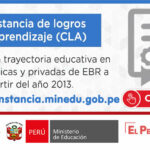 📚✍️ ¡Conviértete en un experto educativo y obtén tu constancia Minedu gob pe! Aprende cómo lograr la constancia que necesitas 🎉🔥
📚✍️ ¡Conviértete en un experto educativo y obtén tu constancia Minedu gob pe! Aprende cómo lograr la constancia que necesitas 🎉🔥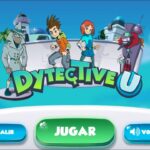 🔎📚¡Descubre las claves del Detective Dislexia y cómo resolver este desafío de aprendizaje!
🔎📚¡Descubre las claves del Detective Dislexia y cómo resolver este desafío de aprendizaje!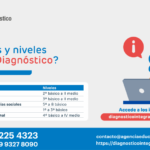 📚🗓️ ¡Celebremos el Día de la #AgenciaEducación! Descubre todo lo que necesitas saber 🎉🌟
📚🗓️ ¡Celebremos el Día de la #AgenciaEducación! Descubre todo lo que necesitas saber 🎉🌟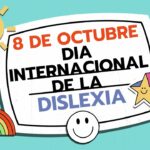 📚🎉 ¡Celebra el #DíadelDislexia! Descubre todo lo que debes saber sobre esta condición y cómo apoyar a las personas disléxicas 🚀💡
📚🎉 ¡Celebra el #DíadelDislexia! Descubre todo lo que debes saber sobre esta condición y cómo apoyar a las personas disléxicas 🚀💡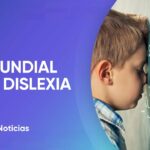 🌍📚 Dia Internacional de la Dislexia: Descubre cómo entender y apoyar a las personas disléxicas
🌍📚 Dia Internacional de la Dislexia: Descubre cómo entender y apoyar a las personas disléxicas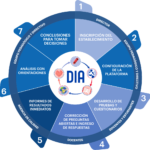 🔍🔍 Descubre el diagnóstico integral de educación en AgenciaEducacion.cl: ¡Optimiza el aprendizaje al máximo! 🔍🔍
🔍🔍 Descubre el diagnóstico integral de educación en AgenciaEducacion.cl: ¡Optimiza el aprendizaje al máximo! 🔍🔍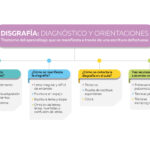 🖊️ ¡Descubre las claves para entender las #disgrafias y cómo abordarlas en el aprendizaje! 📚
🖊️ ¡Descubre las claves para entender las #disgrafias y cómo abordarlas en el aprendizaje! 📚 🧠📚 Descubre todo sobre la 💡 dislexia adquirida: Causas, Síntomas y Tratamientos
🧠📚 Descubre todo sobre la 💡 dislexia adquirida: Causas, Síntomas y Tratamientos 🧠💔 Descubre todo sobre la Dislexia Emocional: Causas, Síntomas y Tratamientos
🧠💔 Descubre todo sobre la Dislexia Emocional: Causas, Síntomas y Tratamientos